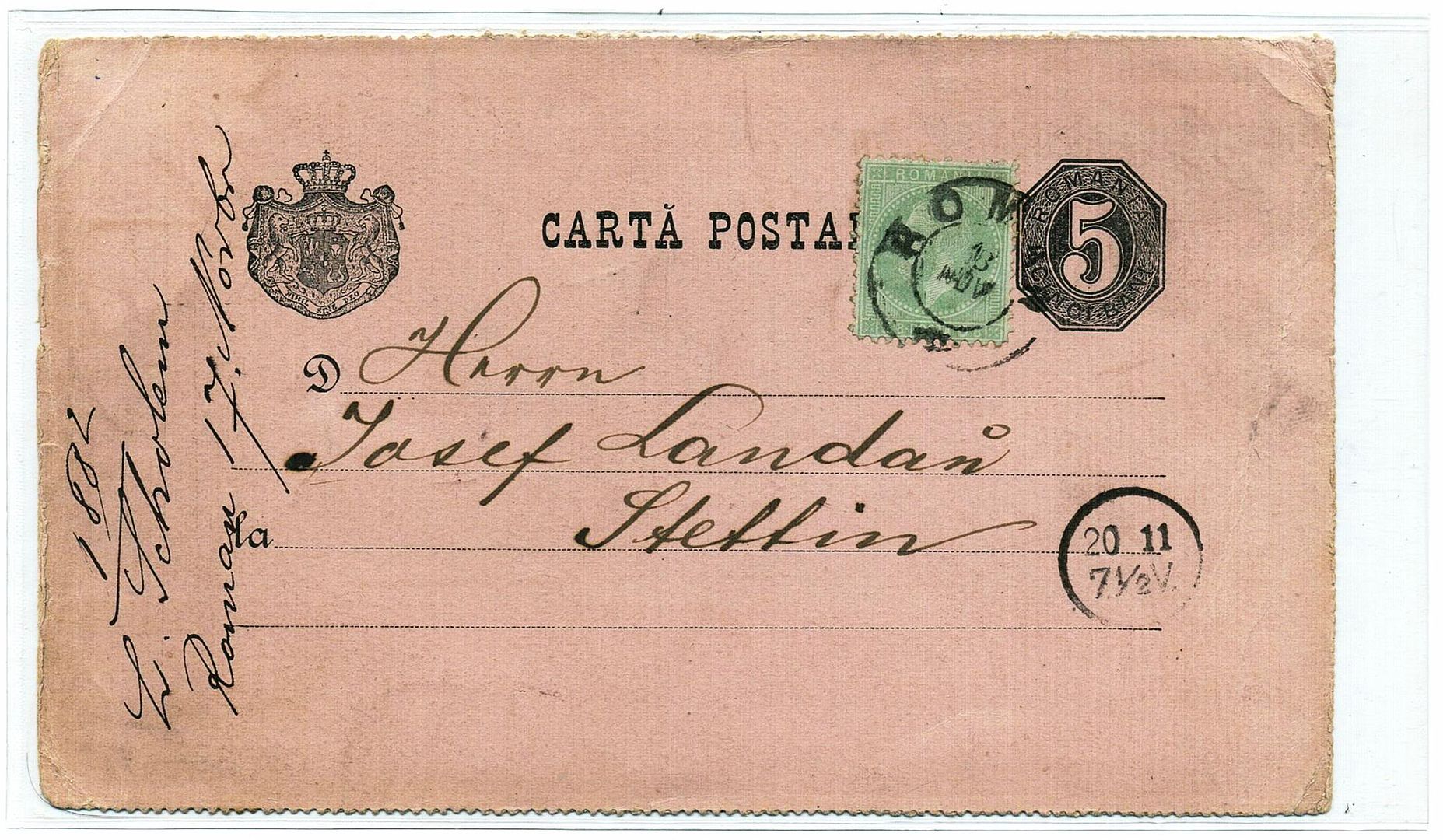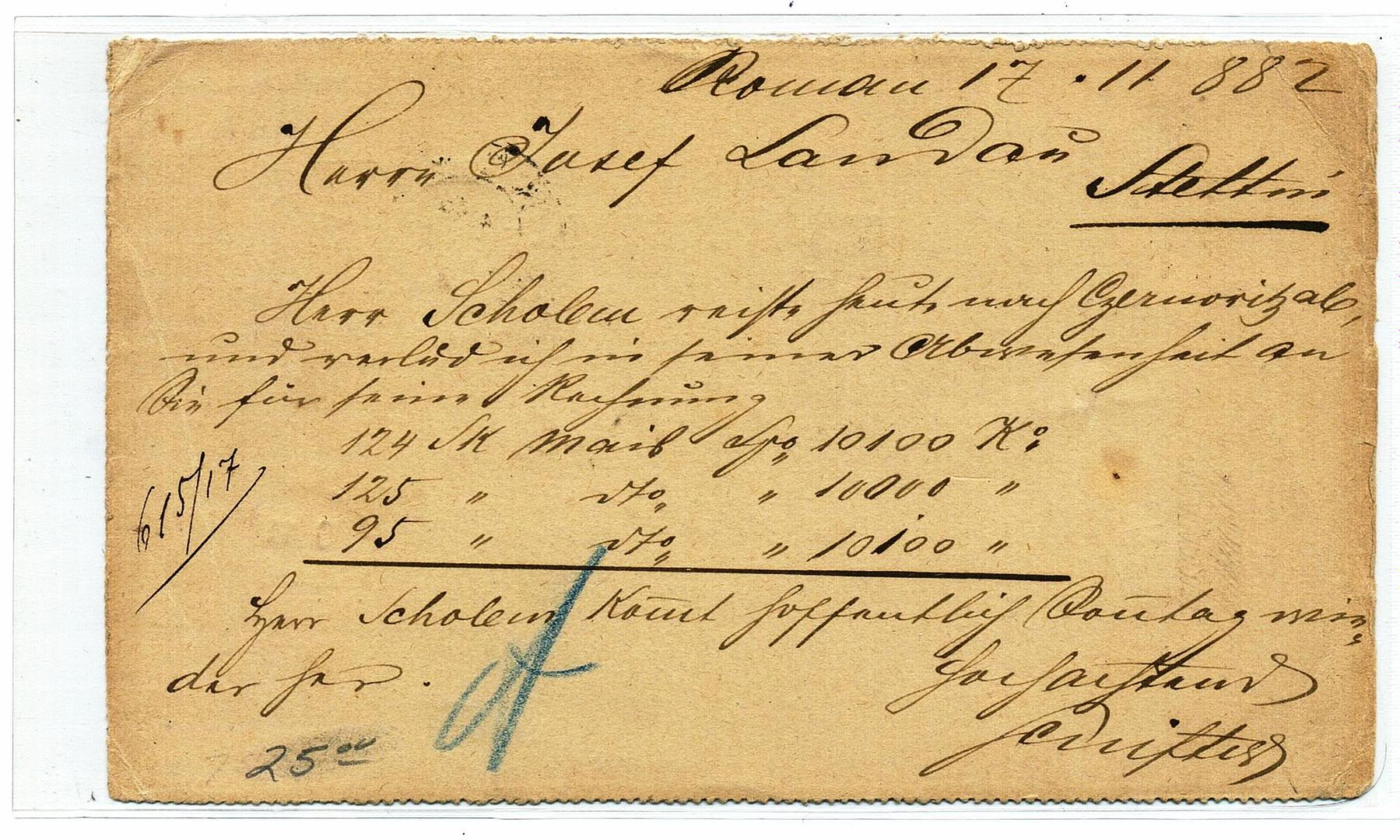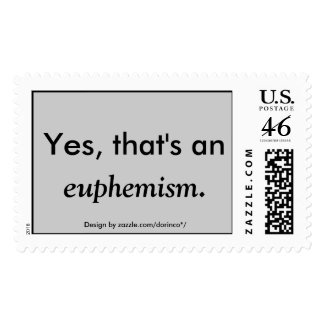Ladies and gentlemen from around the world, this is the oldest postal/philatelic item that I own, so far!!!
Isn't that cool? :
I hereby make an appeal to everybody who has an advance knowledge of philately (especially postal history), and German language to help me uncover the story of this very old postal card.
Thank you!
What can I decipher?
17 Nov 1882: postal card sent by Herr Scholem, from the city of Roman (Romania) to Herrn Josef Landau [?] in Stettin, Prussia/German Empire [present-day Szczecin, Poland]!!!
The monetary sums appear to be denominated in K; I think that's Kreuzer:
More deciphering brainstorming about this - is happening here:
"Roman (Romanian pronunciation: [ˈroman]; Hungarian: Románvásár, German:Romesmark) is a mid-sized city, having the title of municipality, located in the central part of Moldavia, a traditional region of Romania. It is located 46 km east of Piatra Neamţ, in the Neamţ County at the confluence of Siret and Moldova rivers.
It is thought that the name was taken from Moldavian Voivode Roman I of Moldavia, believed to be its founder.[weasel words] Roman's first son was Alexandru cel Bun."
"Stettin developed into a major Prussian port and became part of the Prussian-led German Empire in 1871.
While most of the province retained an agrarian character, Stettin was industrialized and its population rose from 27,000 in 1813 to 210,000 in 1900 and 255,500 in 1925.[51]
Major industries prospering in Stettin since 1840 were shipbuilding, chemical and food industries and machinery construction.[47]
Starting in 1843, Stettin became connected to the major German and Pomeranian cities by railways, and the water connection to the Bay of Pomerania was enhanced by the construction of the Kaiserfahrt (now Piast) canal.[47]"
Now, don't ask me about the text, coz Ich weiss nicht Deutsch so gut; nur ein wennig...:)
The coat of arms on this historic postcard belongs, of course, to the Kingdom of Romania. It has the royal motto:
"Nihil Sine Deo, Latin for "Nothing without God", is used as a motto by the German Hohenzollern-Sigmaringen royal family.
This formula was the motto of the Kingdom of Romania, while ruled by the Hohenzollern-Sigmaringen dynasty (1878 - 1947). The motto is proudly displayed in the arms room of Peleş Castle."
"Timeline (1859 - 1939)
| 1859 | Alexander John Cuza unites Moldavia and Wallachia under his personal rule. |
| 1862 | Formal union of Moldavia and Wallachia to form principality of Romania. |
| 1866 | Cuza forced to abdicate and a foreign dynasty is established. Carol I signed the first modern Constitution. |
| 1877 | April 16. Treaty by which the Russian troops are allowed to pass through Romanian territory April 24. Russia declares war to the Ottoman Empire and its troops enter Romania May 9. Romanian independence declared by the Romanian parliament, start of Romanian War of Independence May 10. Carol I ratifies independence declaration |
| 1878 | Under Treaty of Berlin, Ottoman Empire recognizes Romanian independence. Romania ceded southern Bessarabia to Russia. |
| 1881 | Carol I was proclaimed King of Romania on March 26. [MY NOTE: The postcard is dated in 1882, remember?] |
| 1894 | Leaders of the Transylvanian Romanians who sent a Memorandum to the Austrian Emperor demanding national rights for the Romanians are found guilty of treason. |
| 1907 | Violent peasant revolts crushed throughout Romania, thousands of persons killed. |
| 1914 | Death of Carol I, succeeded by his nephew Ferdinand. |
| 1916 | (August) Romania enters World War I on the Entente side. (December) Romanian Treasure sent to Russia for safekeeping, but was seized by Soviets after the Romanian army refused to withdraw from Bessarabia. [MY NOTE: cheese of the B type...] |
| 1918 | Greater Romania is created. |
| By the Treaty of Versailles, Romania agreed to grant citizenship to the former citizens of Russian and Austro-Hungarian empires living in the new Romanian territories. | |
| 1919 | A military conflict occurs between Romania and Hungarian Soviet led by Béla Kun. The Romanian Army takes over Budapest on 4 August 1919. The city is ruled by a military administration until 16 November 1919. |
| 1920 | The Treaty of Trianon upholds Romanian unification." You thought "it's a long way to Tipperary"? [that's a cultural reference, don't worry about it] It was a long, long way for the Romanian lands/principalities to achieve unification and independence from all those ancient and feudal enemies and invaders. Them B cheese... (Hint: read aloud, until you get it...) |
===============
Happy Sunday Stamps meme!
Please visit: http://viridianpostcard.blogspot.com/




